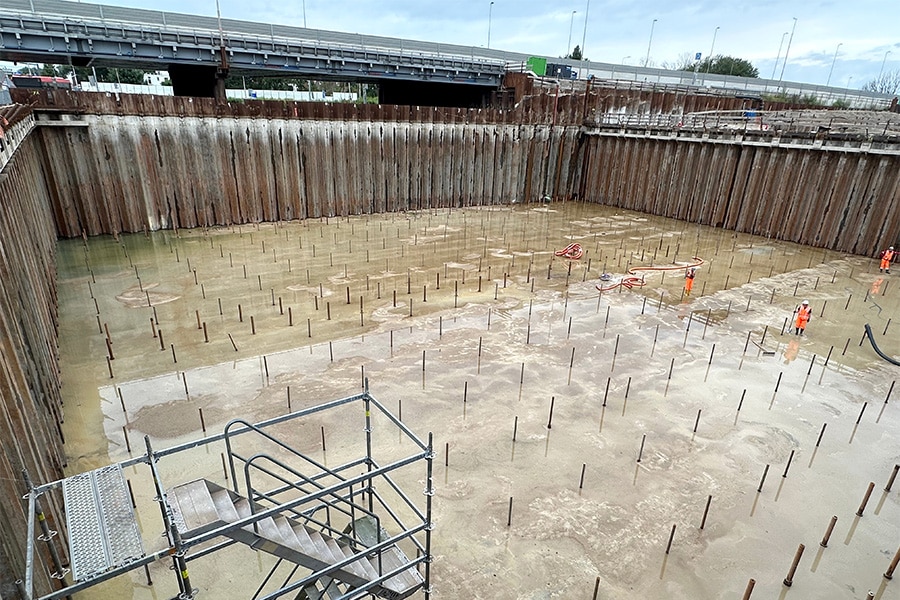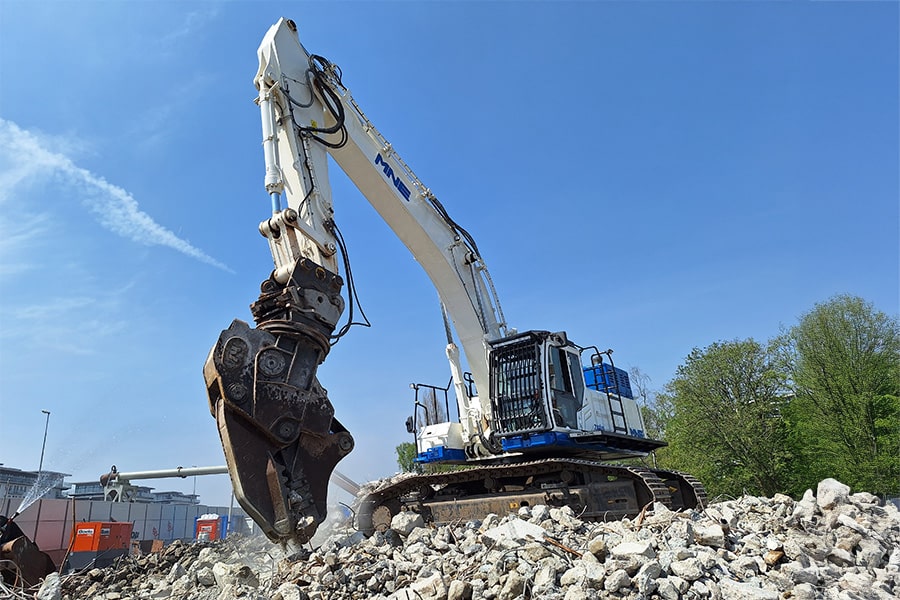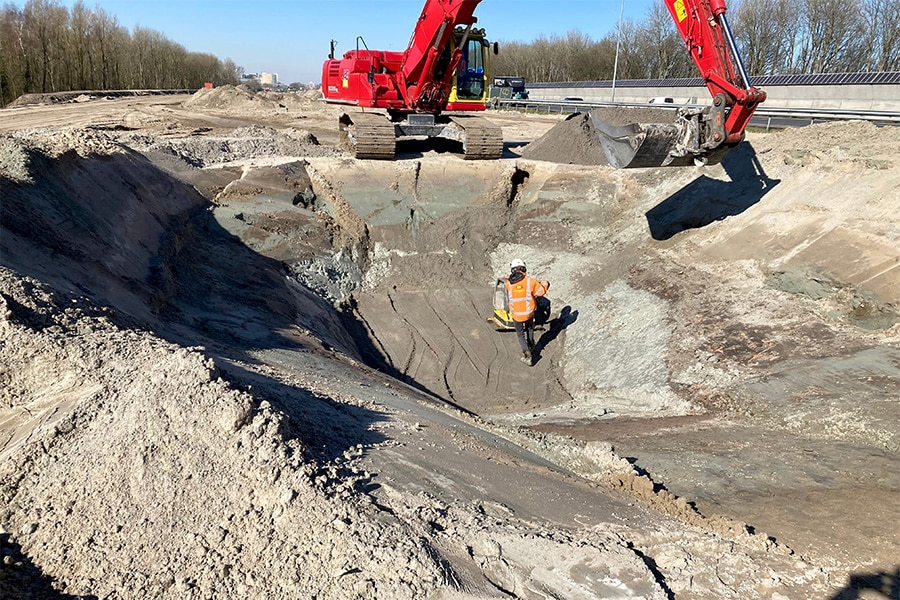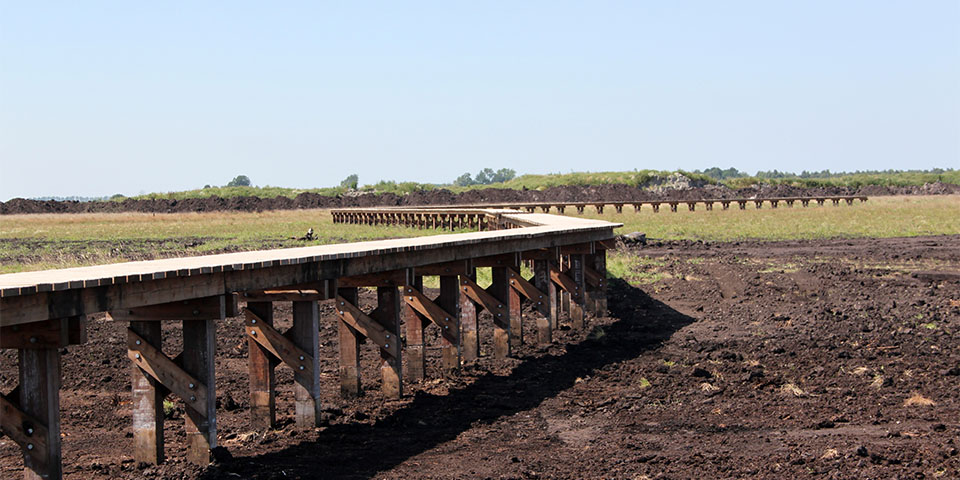
'Choosing sustainable timber protects the forest'
Demonstrably sustainable timber carries footbridge over new wetland
In Groningen, walkers walk on a long walkway across a new wetland. Certified wood forms the basis for today's recreational project. Naturally, according to the wood supplier, "because by choosing demonstrably sustainable wood you protect the forest.
This involves the footbridge Dannemeer in Schildwolde, Groningen. The Dannemeer is a lake and peat swamp in Groningen created between 2010 and 2014, covering a total area of 525 hectares as a nature reserve. Agricultural land has been returned to nature for sustainability reasons, and in the future a solar park with solar panels will form a buffer between the nature reserve and the agricultural hinterland. In other words, a sustainable concentration area. A wooden footbridge has been placed in this area, where hikers experience a special experience and walk over demonstrably sustainable wood over a wetland.
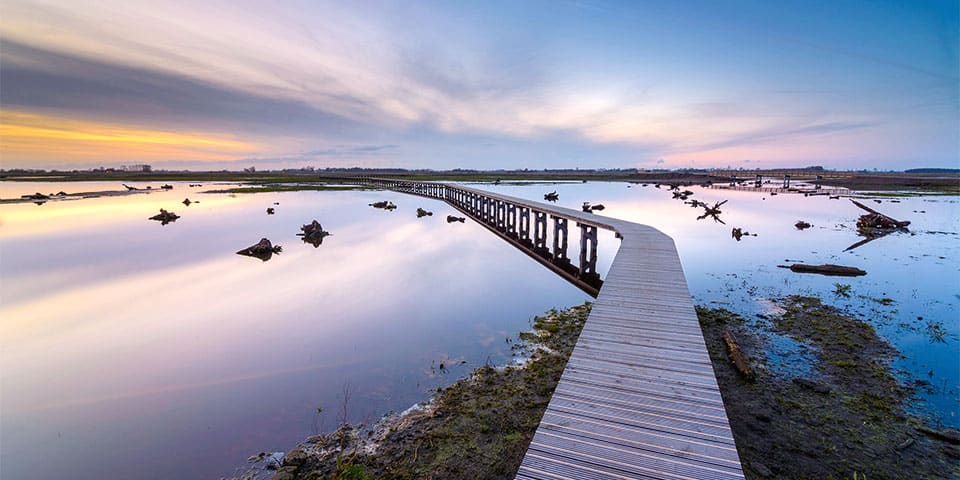
Lake Dannemeer is a lake and peat bog created between 2010 and 2014 in Groningen.
Klaas Jan Swager, the wood supplier for this project says, "The government is the client and the contractor carried out the project. The government requires that the wood be delivered according to certain sustainability requirements." That means the wood must meet sustainability requirements in terms of origin. By working with a certificate for sustainable origin, you can make this demonstrable. Foreco goes one step further: "We want to contribute to the right wood in the right place, in this case we therefore chose a composite product of softwood and hardwood."
The walkway is made of composite posts: 40% tropical certified hardwood and 60% certified softwood. The softwood and the hardwood are permanently glued with a finger joint. This ensures strong construction and long life. The upper part hardwood is above water and softwood is used below the water edge. Whether it is extra complicated to sell a composite product under the government's applicable sustainable procurement requirements? Swager: "Together with the customer you look for a pragmatic solution to meet the sustainability requirements, in which we guarantee the origin."
"Choosing demonstrably sustainable wood should always and everywhere go without saying," Swager continued. "The environmental scores of wood are very positive. And by using certified wood you protect the forest." That the use of wood protects forests may sound contradictory, but it is not. With sustainable forest management, we preserve forests. This is important from an ecological, environmental and economic standpoint because many animals and people worldwide depend on forests and the products from the forest. With sustainable forest management, we determine in advance how much wood can be felled responsibly from the forest, and then leave the forest alone for a certain period of time so that flora and fauna remain intact and the remaining trees can continue to grow.
What is important in sustainable forest management is to look beyond the wood itself. Forests provide important ecosystem services such as sequestering CO2 and the production of oxygen, but things like water balance and air quality are also affected by forests. For example, preventing erosion is also an important forest function.
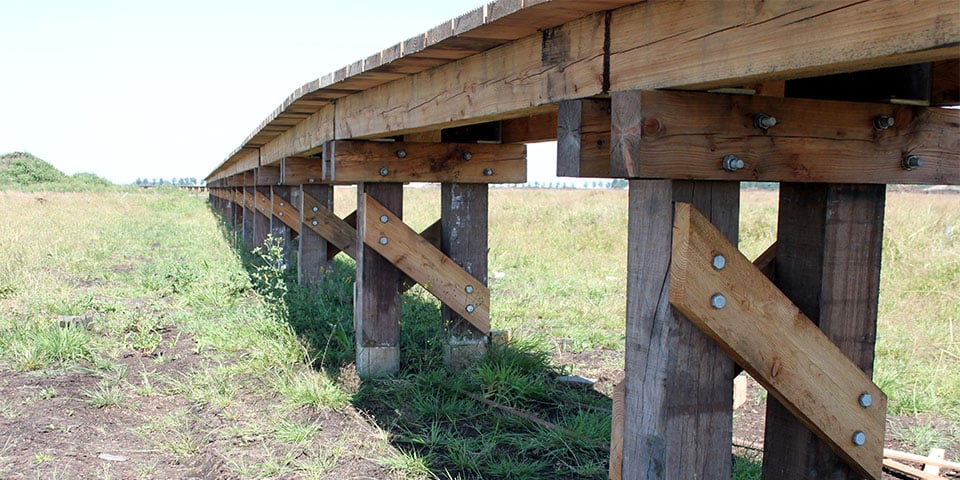
The walkway is made of composite posts.
The United Nations assumes that 1.6 billion people worldwide depend on the forest for part of their food supply, or other products such as medicine, raw materials, ecosystem service or part of their livelihood. Sustainable forest management involves these local people closely in forest management. The local population retains control over what happens to the forest on the one hand, but is also provided with employment through timber production.
The biggest threat to forest is conversion to other land uses. Mostly agriculture for the increasing demand for agricultural products such as palm oil, rubber, cocoa, soy and meat. By giving economic value to the forest through wood production, the risk of deforestation becomes much smaller. And that benefits the local population, animals and the environment.
Partly in view of the enormous construction task facing the Netherlands - in the period 2020-2025: 75,000 new homes a year - there is an important opportunity for using more wood instead of other, climate-damaging materials. This is also consistent with the growing importance assigned to forests in general to help achieve the climate goals. To manage more forests sustainably, demand for certified forest products is crucial. In the Covenant to Promote Sustainable Forest Management, various parties (government, unions, civil society and industry associations) are working together to promote sustainable forest management. They see stimulating demand for wood from sustainably managed forests as important to counter the risk of deforestation. Would you also like to switch to demonstrably sustainable wood for your project? Read more at www.inkoopduurzaamhout.nl.

